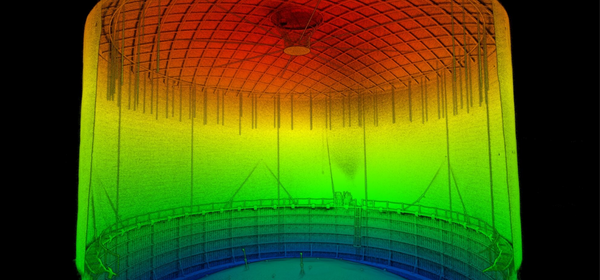The Final Frontier: Digital Twins Connect the Physical and Digital Worlds…

Digital twins – the exact replica of a physical entity in the digital plane – are fast becoming a vital tool for the advancement of technology. Only a few years ago, such assets were only found in the realm of aeronautical engineering, space tech and the like. But today they’re being embraced by virtually every industry…
The concept was brought to the forefront when it was featured as a future trend in 2017. By 2019, the global market was worth around US$4 billion, and this is predicted to rise to US$36 billion by 2025.
Such an impressive rise in popularity shouldn’t come as a surprise. The use of the technology is virtually limitless. From replicating an engine to a building, a human organ or even a complete smart city, the technology allows us to run ‘what if’ scenarios in the safety of the digital world.
So… How does it work?
The Rise of the IoT
As smart items – AKA, the Internet of Things (IoT) – have grown in their ability to collate information, the channelling of real-world data to the cyber plane has become more efficient. Information and attributes can be fed into a computer via IoT sensors to replicate virtually any system or object. This can also be applied to processes, as well as physical assets.
The program integrates this data with machine learning, AI and analytics. This results in a powerful method of testing processes, services and more.
But what does the digital twin achieve that AI and machine learning can’t?
The crucial element is that the tech combines all the attributes and can visualise data in real-time. This overcomes the challenge that companies without an infinite design budget have historically been unable to do – taking the data supplied by automation and implementing it into existing processes.
Because a digital twin is a 3D version of its real-life counterpart, it provides a wholly safe testing environment. Being computer-driven, it removes the human error aspect of analysing complex data. Instead, it showcases a functioning model where alterations can be trialled and modelled, or any type of testing scenario can take place with no risk whatsoever to its real-life counterpart.
The potential is immense. They’re already in use and represent an affordable cost for businesses of all sizes. Examples of digital twin integration within a wide variety of industries includes:
- Supply chain testing
- Urban planning and traffic congestion
- Surgical scenarios
- Smart building optimisation
Embracing Digital Twin Technology
The facility to utilise the digital twin advantage is already hitting the mainstream. By instantly analysing real-time data, the technology provides businesses with a level of understanding that’s never been seen before.
Predictive maintenance, customer behaviours, the lifecycle of an asset or performance of a process… The list is endless. We’re already on the second version of digital twin technology, whereby human input can also be integrated into any scenario. The potential is infinite and is set to snowball.
Much as internet use exploded in popularity back in the 1990s, expect this bridging of the physical and digital planes to do the same.
The digital twin is here and it’s here to stay. At Nexxis, we’re right at the forefront of such technology – providing proven cutting-edge solutions to our customers.
Nexxis Technology 4.0 is dedicated to utilising the latest tech to solve even the most difficult of challenges. From off-the-shelf equipment to bespoke, curated solutions, ‘impossible’ simply isn’t a word that our design team is aware of.
Contact us to find out more about digital twin technology or any of our other custom solutions, or request a quote online.
Read more about digital twins in our Digital Twin 101: The Natural Successor to IoT?
